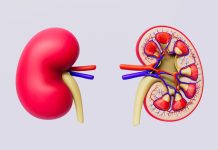
A groundbreaking study conducted by researchers from UCL, the Royal Free Hospital, the University of Oxford, and the University of Cambridge has shed new light on the risk factors contributing to alcohol-related cirrhosis (ARC).
Published in Nature Communications, this study is the first of its kind to evaluate the combined effects of drinking patterns, genetic predisposition, and the presence of type-2 diabetes on the likelihood of developing ARC.
The research team analyzed data from 312,599 actively drinking adults in the UK Biobank cohort. They aimed to understand how different factors interplay in increasing the risk of liver disease.
Their findings are significant, especially considering that liver disease is a leading cause of premature death worldwide, with 2-3% of the global population suffering from cirrhosis or liver disease.
One of the key observations of the study is the importance of the pattern of drinking over the volume consumed.
Binge drinking, defined in the study as consuming 12 units of alcohol in a day during a week, emerged as a critical factor. Individuals who engaged in heavy binge drinking were found to be three times more likely to develop ARC.
Another significant finding is the role of genetic predisposition. Individuals with a high genetic risk were four times more likely to develop ARC. Additionally, the presence of type-2 diabetes doubled the risk.
When these factors were combined — heavy binge drinking and high genetic predisposition — the risk of developing ARC increased sixfold compared to the baseline. The inclusion of type-2 diabetes in this mix further escalated the risk.
Dr. Linda Ng Fat, one of the study’s first authors from UCL Epidemiology & Public Health, highlighted the novelty of their approach by focusing on the pattern of drinking rather than the volume alone. This approach led to a better understanding of the liver disease risk.
Dr. Gautam Mehta, a senior author from UCL Division of Medicine and the Royal Free Hospital, emphasized that while genetics is a contributing factor, the pattern of drinking is a key element in determining the risk of serious liver disease.
This research suggests that concentrating alcohol consumption into fewer sessions is more harmful than spreading it evenly over a week.
The study also explores the potential future use of polygenic risk scores in clinical practice. Though not widely used currently, these scores could become an essential tool in personalized medicine, helping to define individual disease risks more accurately.
Dr. Steven Bell, a senior author from the University of Cambridge, pointed out the urgency of addressing the escalating crisis of liver disease, especially in light of the recent surge in alcohol-related fatalities since the COVID-19 pandemic.
Pamela Healy, Chief Executive of the British Liver Trust, remarked on the importance of this research in understanding the consequences of binge drinking on liver health.
She stressed the need for a comprehensive alcohol strategy in the UK, encompassing taxation, stricter controls on alcohol marketing, and greater public awareness of the risks associated with binge drinking.
In conclusion, this study offers crucial insights into the interplay of genetic factors, diabetes, and drinking patterns in the risk of developing alcohol-related cirrhosis.
It underscores the need for targeted interventions and strategies to mitigate these risks and highlights the importance of considering individual behavioral and genetic factors in addressing liver health.
If you care about liver health, please read studies about a diet that can treat fatty liver disease and obesity, and coffee drinkers may halve their risk of liver cancer.
For more information about liver health, please see recent studies that anti-inflammatory diet could help prevent fatty liver disease, and results showing vitamin D could help prevent non-alcoholic fatty liver disease.
The research findings can be found in Nature Communications.
Copyright © 2023 Knowridge Science Report. All rights reserved.



